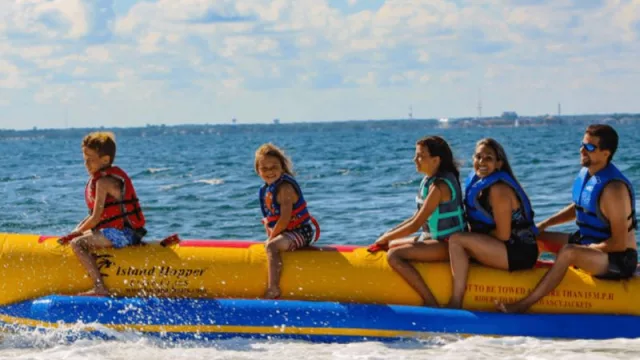You can listen to more articles from The Conversation, narrated by Noa, here.
In response, the trend of “quiet quitting” is emerging. This attitude encourages employees to fulfil their job duties without subscribing to “work is life” culture to guide their career and stand out to their managers.
The idea of putting in just enough effort to not get fired, but without going above and beyond, has a long history in the labour movement. A concept called “work to rule” has been used by workers around the world for centuries, and is a popular method of industrial action in the UK.
Historically, working to rule has been an effective – and legal – tool for unions to disrupt the operations of a company during trade disputes by slowing down operations. When the French railways were nationalised in 1938, strikes were forbidden. However, railway workers were aware that French law required engineers to assure the safety of any bridge over which the train passes.
If any doubt remained after a personal examination, the engineer had to consult other members of the train crew. Working to rule isn’t just about minimising workload, it can be used to frustrate the operations as well – in this case, workers called for every bridge to be inspected, consulting every crew, leading to none of the trains running on time.

This article is part of Quarter Life, a series about issues affecting those of us in our twenties and thirties. From the challenges of beginning a career and taking care of our mental health, to the excitement of starting a family, adopting a pet or just making friends as an adult. The articles in this series explore the questions and bring answers as we navigate this turbulent period of life.
You may be interested in:
Four reasons the shift to hybrid working is set to stay for young professionals
Cost of living crisis: what are your rights if your landlord wants to increase your rent?
Houseplants don’t just look nice – they can also give your mental health a boost
In 1968, more than 2,000 Air Canada passenger agents and communications personnel implemented work to rule over a labour dispute. Representatives at the time stated that their members would usually take whatever “shortcuts” they could to keep passengers moving at maximum speed. However, they abandoned these shortcuts, working strictly to the airline’s rules and regulations, until a settlement was reached.
In May 2021, the UK university college union took “action short of a strike”, which often describes a work to rule approach. Staff still carried out their jobs, but interrupted the normal operations of work through eight forms of action:
- boycott of marking and assessing
- not covering for absent or unavailable colleagues
- not using the university’s online systems on a Friday
- not rescheduling lectures, classes, appointments, meetings or other tasks cancelled due to industrial action
- not engaging in meetings longer than 50 minutes
- not sending emails before 9:00 am and after 5:00 pm
- not volunteering ideas or for additional tasks
- not undertaking work beyond that contracted.
This demonstrated to the employer that the university could not function without staff routinely going above and beyond what their jobs actually require.
In August 2022, members of the National Union of Journalists, include those at the Daily Mirror, Daily Express and Manchester Evening News voted 88% in favour of action short of a strike. Amid ongoing, all-out strikes in several industries, there is clearly still an appetite for disruption in the workplace.
Is quiet quitting a form of industrial action?
Industrial action in the UK is changing. A younger and more diverse labour market wants change in the workplace over inequality and pay gaps, but their approach is less about working class solidarity than that of previous generations.
This is evident in the decline in trade union membership, especially among younger people. For workers aged 20–29, trade union membership is at 14.1%. This falls by almost half to 7.5% in the private sector, where most young people work.

Many states (in particular EU members or countries trading with the EU) have restricted the freedom of employers and workers to form contractual arrangements, and to change them as economic circumstances alter. Before state intervention, industrial relations were mostly voluntary arrangements between employers, employees and trade unions. With the decline in trade union membership and fewer opportunities for industrial action, “quiet quitting” and working to rule is becoming more common.
The methods of removal of labour may be similar, but the overarching premise behind them has changed. Working to rule has historically been a form of collective action over a dispute, usually involving pay and conditions.
The quiet quitting approach has a far more personal and psychological attitude, tied to workers’ individual desire for good mental health. Psychologists argue that this approach to work can salve burnout, set healthy boundaries, build a sense of control and help people prioritise what really matters.
Employers will need to address this issue to ensure productivity is not affected in the short or long term – but it will be difficult to tackle. Work to rule (and other industrial action) is a known quantity for employers. Workers are clear about the terms of the dispute, what the collective action is and how long it will last.
On the other hand, as its name suggests, quiet quitting is a silent protest that employers will have to solve by meeting the demands of each employee, or by reengaging with trade unions to create workplaces that people want to engage with.
Jonathan Lord, Lecturer in Human Resource Management and Employment Law, University of Salford
This article is republished from The Conversation under a Creative Commons license. Read the original article.
![]()












Tu opinión enriquece este artículo: